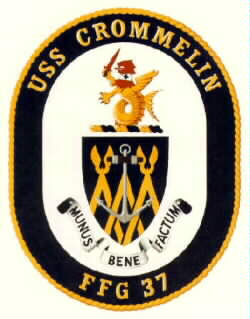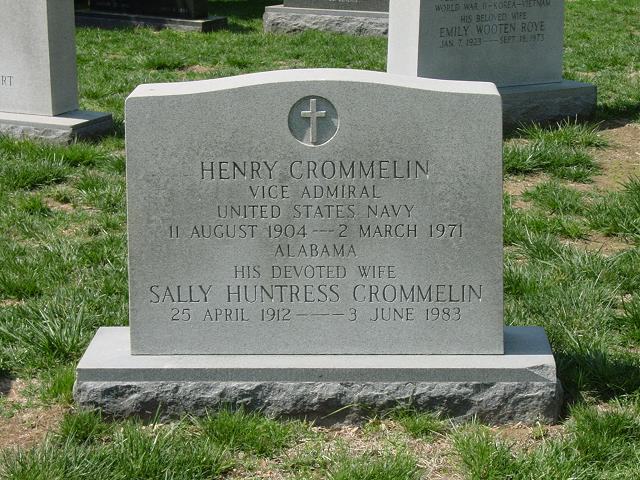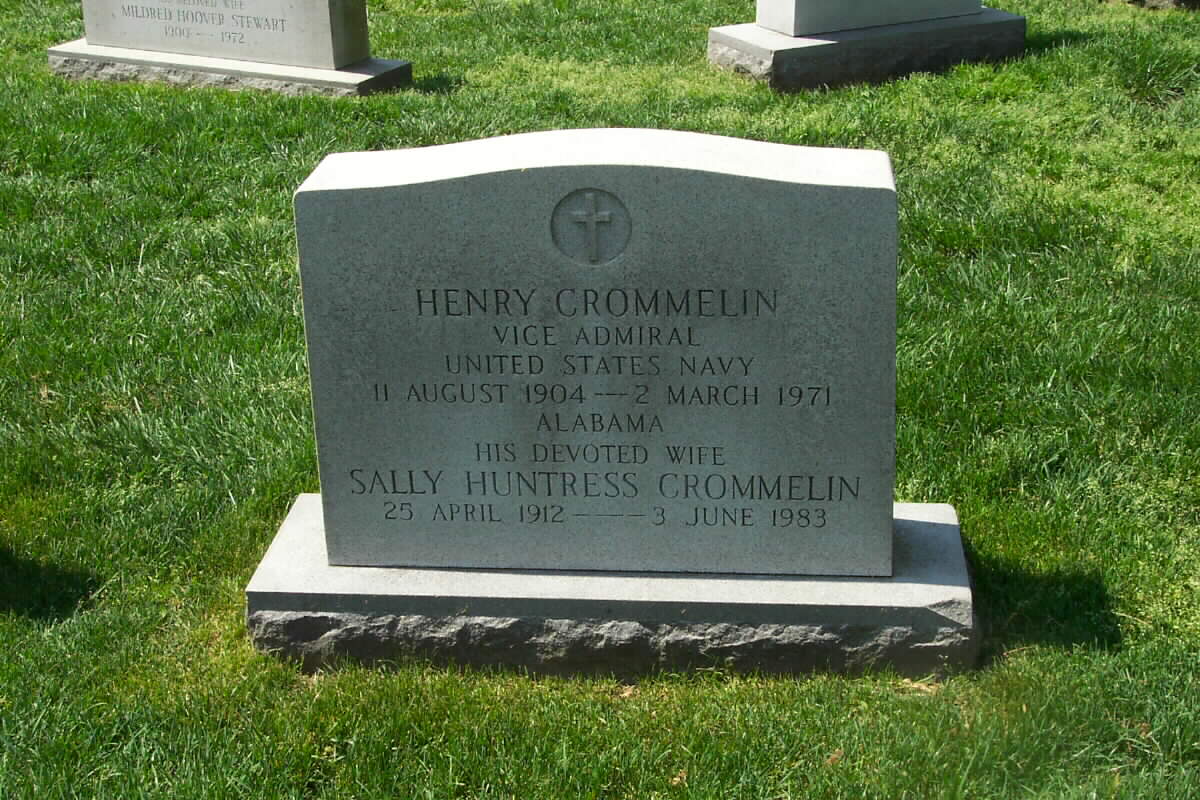The Crommelin brothers were the only five siblings ever to graduate from the U.S. Naval Academy. Four of them became pilots, and Time magazine dubbed them “The Indestructibles.”
They weren’t. Brothers Charles and Richard Crommelin were killed in action in the Pacific. But Henry, Quentin and John survived. The Navy later named a ship, the USS Crommelin, in their honor.
Henry Crommelin, Vice Admiral, (1904-1971)
Born 11 August 1904 Montgomery, Alabama
Son of John Geraerdt Crommelin and Katherine Vasser Gunter
Married Sally Huntress
Admiral Crommelin commanded the Destroyer Squadron Fifty during the Gilbert Islands Campaign (World War II) for which he was awarded the Silver Star Medal for gallantry. He also earned theBronze Star Medal for heroism during the amphibious assault which resulted in the capture and occupation of Guam, Mariana Islands.
Admiral Crommelin later served as Assistant Chief of Naval Personnel and Chief of Staff to Commander Destroyers, U.S. Atlantic Fleet. He commanded the cruiser Des Moines (CA-134), flagship to the Sixth Fleet, was commander of Battleship Division Two and served as Commander Naval Base Newport, Rhode Island until his retirement on 1 November 1959.
Courtesy of Alabama Heritage:
“Alabama Heritage” Tells How 5 Alabama Brothers Made History
History-making seemed to come naturally to the Crommelin boys of Wetumpka, Ala., both at sea and in the air. The five brothers made their mark in World War II, earning a series of medals, and in the process becoming one of the most decorated families in naval history. A monument to the Crommelins in Battleship Park in Mobile, Alabama, commemorates their bravery.
The Crommelin family’s connection to the Navy began when the boys’ parents decided to send their rambunctious eldest son, John, to the U.S. Naval Academy at Annapolis after he had completed one year at the University of Virginia. Thus began a family tradition, with John’s four brothers also enrolling in the academy. Four of the brothers earned their wings and engaged in air combat in World War II, while Henry, whose eyesight prevented him from becoming a pilot, made his mark aboard destroyers.
In the Fall 1997 issue of Alabama Heritage, John B. Scott, Jr., incorporates the lives and heroic acts of the Crommelin brothers with the history of the naval battles that took place in the Pacific theater in World War II. In the first great air battle between carrier-based planes, Richard Crommelin, based on the carrier Yorktown, fought enemy fire during his first combat engagement in the Battle of the Coral Sea. Richard was able to eliminate six Japanese Zeros and then, when his engine failed, successfully belly-land on the sea. He was awarded a Navy Cross for his bravery.
John and Quentin Crommelin also distinguished themselves aboard the Enterprise and the Saratoga in the Battle of Midway. Charles Crommelin assumed command of Carrier Air Group 5 aboard the Yorktown after a series of victorious attacks against the Japanese, earning a Distinguished Flying Cross. Henry Crommelin had been in command of a destroyer in the Atlantic and was later given command of a destroyer in the Pacific. He carried on the Crommelin tradition by earning the Silver Star and then the Bronze Star Medal with Combat “V” for his heroic actions in Guam.
Time magazine dubbed the Crommelin brothers “The Indestructibles” for their amazing escapes from death, but it wasn’t long before this proved sadly untrue. Within three months of each other, Richard and Charles were both killed in mid-air collisions with other Navy planes, and “the fleet’s most famous flying family” was broken up.
After the war, while living in Georgetown and attending the National War College in Washington, D.C., John Crommelin challenged naval authorities by arguing against the “Unification Act” and in favor of maintaining the Navy’s aircraft carrier force. His actions initiated what became known as “The Revolt of the Admirals,” which resulted in the saving of the Navy’s air arm, but cut short Crommelin’s own brilliant career as an admiral. He retired and went home to Alabama. Eventually, Henry and Quentin also retired with Admiral and Captain status, respectively. Quentin, the youngest brother and the last of the famous flying Crommelins, died at his home, on family lands fronting the Coosa River, in April 1997.
Alabama Heritage is a nonprofit quarterly magazine published by The University of Alabama and The University of Alabama at Birmingham. To order the magazine, write to Alabama Heritage, Box 870342, University of Alabama, Tuscaloosa, AL, 35487, or call (205) 348-7467.
Admiral Crommin was buried with full military honors in Section 5 of Arlington National Cemetery. His wife, Sally Huntress Crommelin (25 April 1912-3 June 1983) is buried with him.
CROMMELIN, HENRY
- VADM USN
- VETERAN SERVICE DATES: Unknown
- DATE OF BIRTH: 08/11/1904
- DATE OF DEATH: 03/02/1971
- DATE OF INTERMENT: 03/05/1971
- BURIED AT: SECTION 5 SITE 45
ARLINGTON NATIONAL CEMETERY
Michael Robert Patterson was born in Arlington and is the son of a former officer of the US Army. So it was no wonder that sooner or later his interests drew him to American history and especially to American military history. Many of his articles can be found on renowned portals like the New York Times, Washingtonpost or Wikipedia.
Reviewed by: Michael Howard



